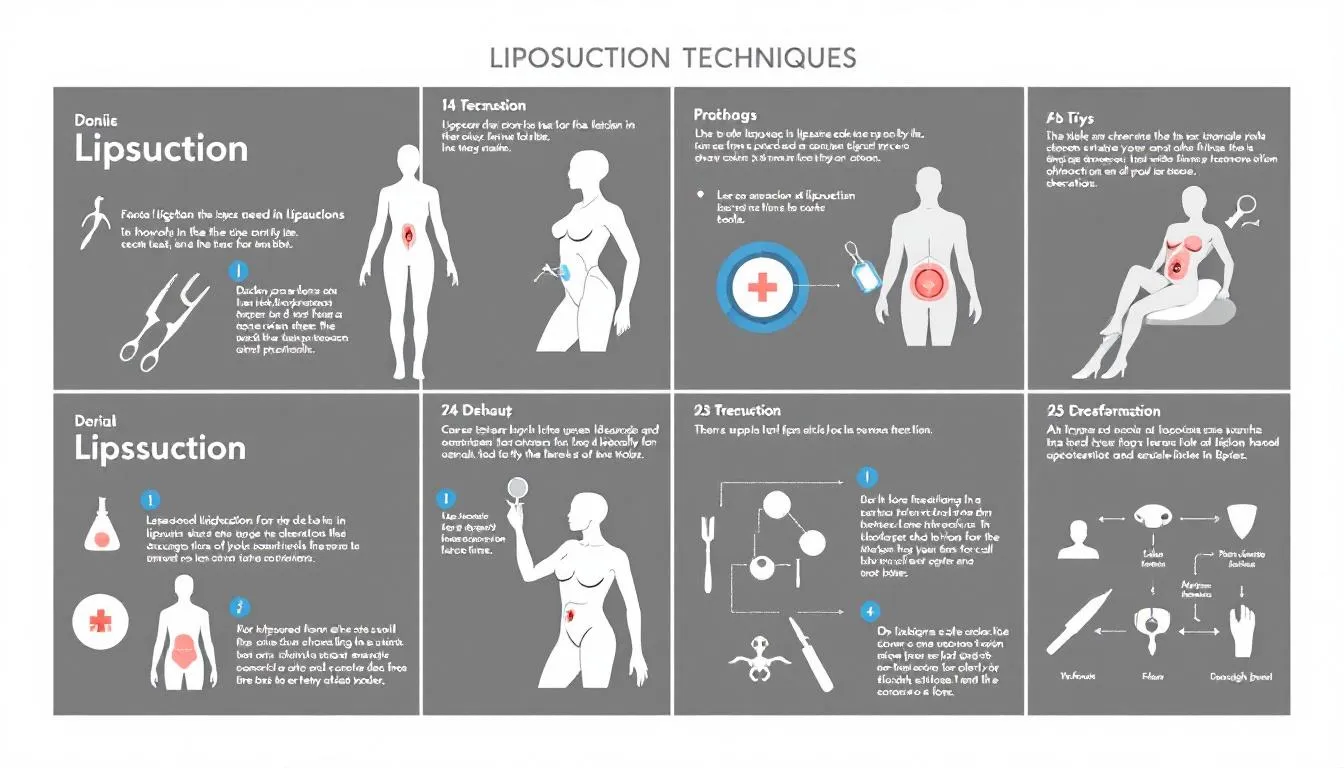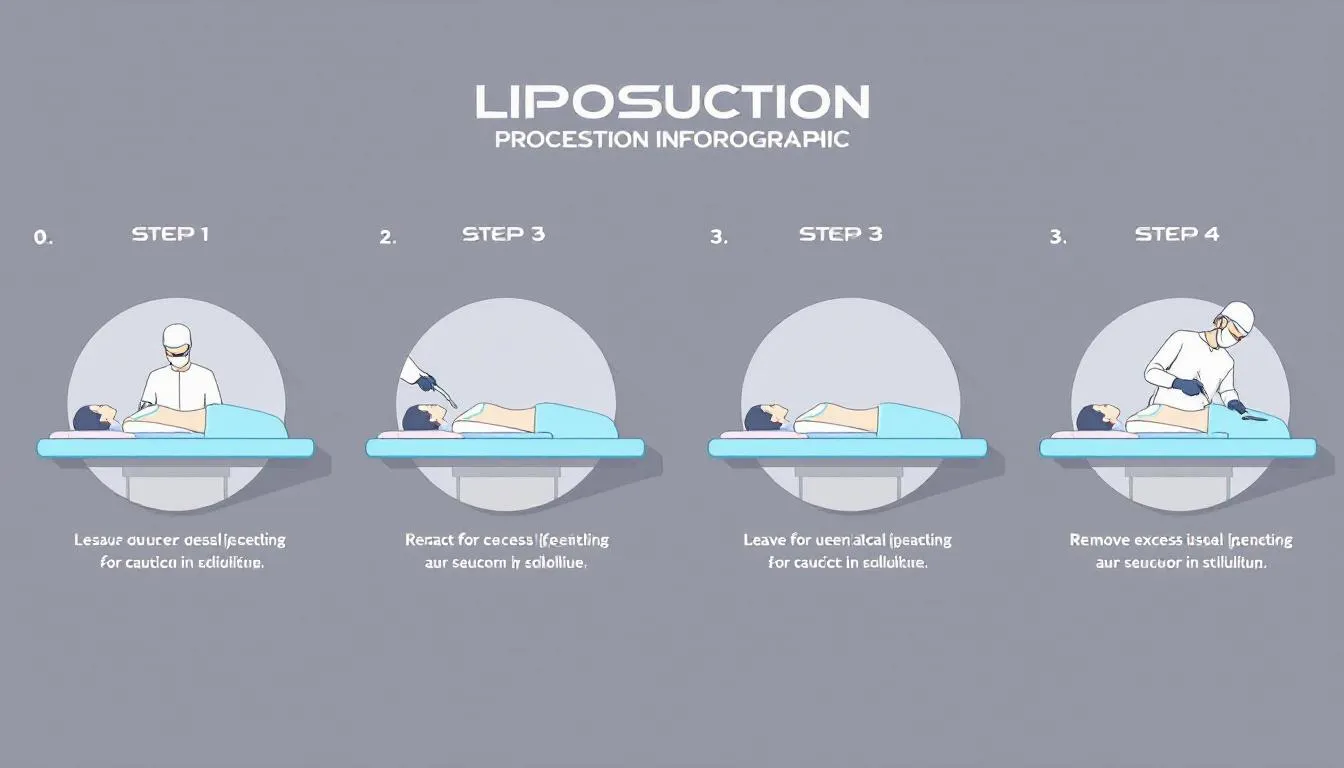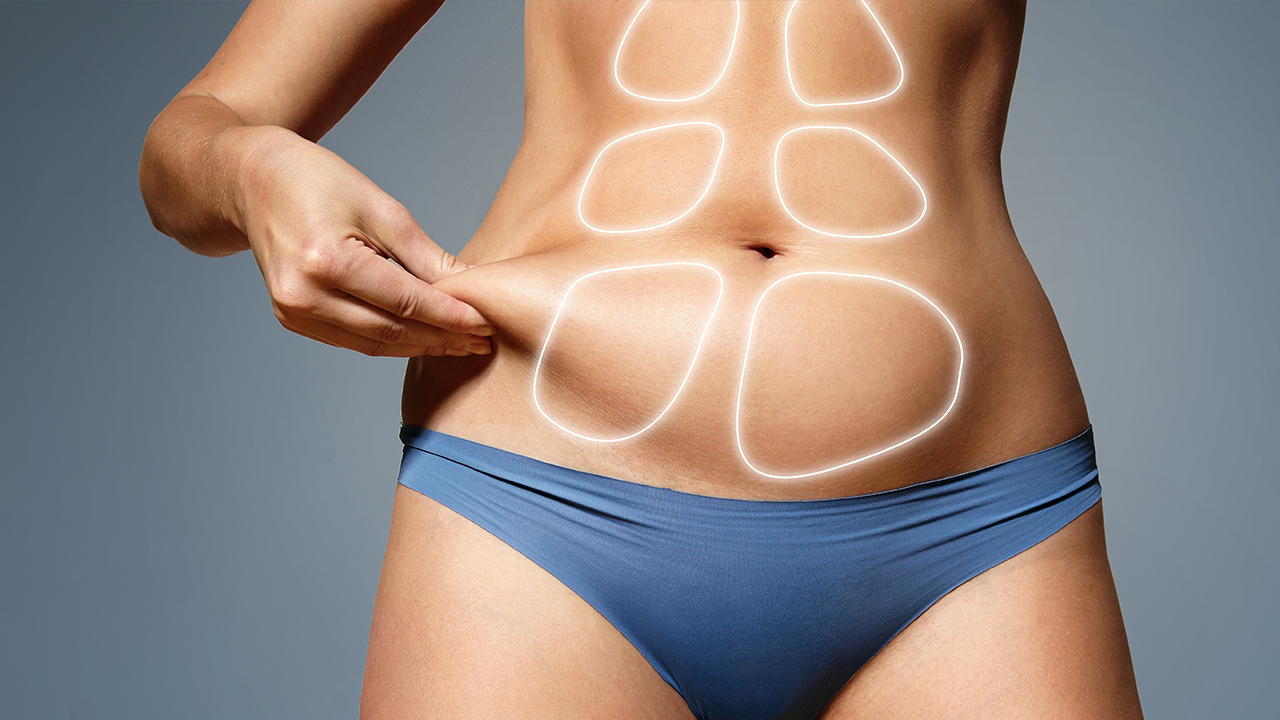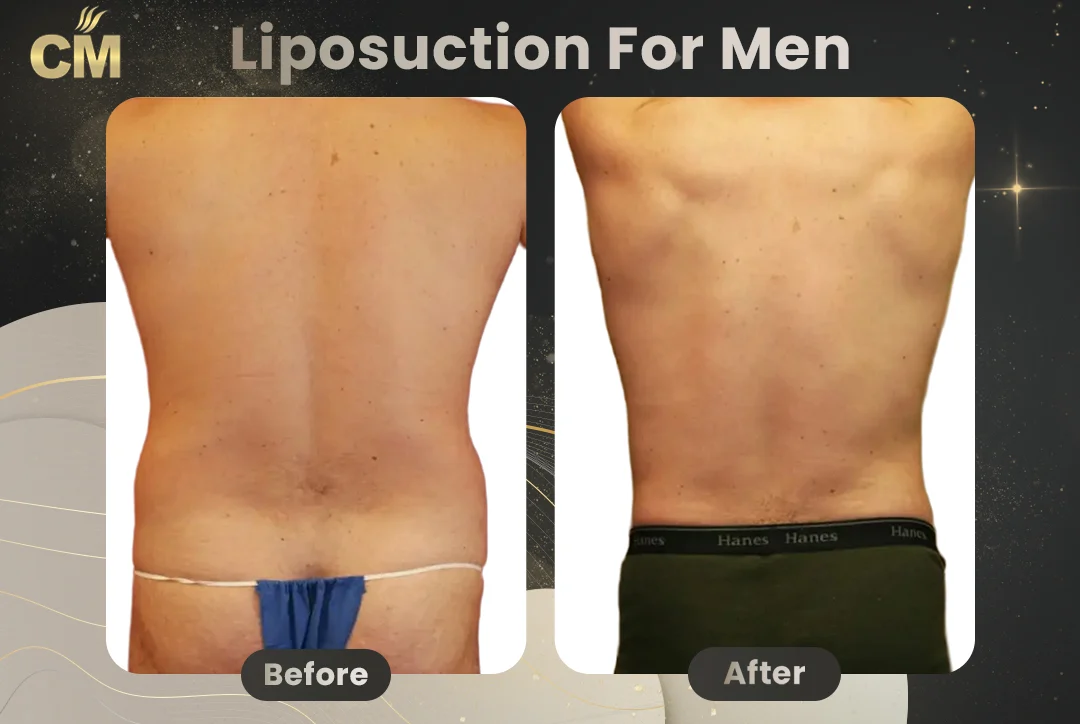Liposuction: Procedure, Benefits, and Recovery Guide
Liposuction is a procedure to eliminate stubborn fat that doesn’t respond to diet and exercise. This guide will cover its techniques, benefits, risks, and recovery process. By understanding these factors, you can make an informed decision about whether liposuction is right for you.
Key Takeaways
- Liposuction is a body contouring procedure aimed at removing localized fat deposits without serving as a weight loss method.
- Various liposuction techniques, including traditional, power-assisted, ultrasound-assisted, and laser-assisted methods, offer tailored options for different patient needs.
- Post-operative care is crucial for recovery, and maintaining a healthy lifestyle is essential to sustain the results achieved through liposuction.
Understanding Liposuction
 Liposuction surgery is a surgical procedure designed to remove unwanted fat from specific areas of the body, thereby enhancing and refining the body’s contou Liposuction surgery is a surgical procedure designed to remove unwanted fat from specific areas of the body, thereby enhancing and refining the body’s contours. For more comprehensive information on liposuction, including its history, techniques, and risks, you can refer to the Liposuction article on Wikipedia.rs. Liposuction is not a weight loss procedure but a method of body contouring. This distinction is essential because liposuction targets localized fat deposits resistant to traditional weight loss methods.
Liposuction surgery is a surgical procedure designed to remove unwanted fat from specific areas of the body, thereby enhancing and refining the body’s contou Liposuction surgery is a surgical procedure designed to remove unwanted fat from specific areas of the body, thereby enhancing and refining the body’s contours. For more comprehensive information on liposuction, including its history, techniques, and risks, you can refer to the Liposuction article on Wikipedia.rs. Liposuction is not a weight loss procedure but a method of body contouring. This distinction is essential because liposuction targets localized fat deposits resistant to traditional weight loss methods.
The procedure can effectively reshape various body areas, such as the abdomen, thighs, and arms, allowing for detailed improvements in body contour. Often referred to as body contouring or lipoplasty, liposuction is a popular choice for individuals seeking to achieve a more balanced body shape and aesthetically pleasing appearance through plastic surgery procedures body contouring surgery.
Types of Liposuction Techniques
 Liposuction has evolved significantly over the years, resulting in various techniques tailored to different patient needs and procedural goals. The primary distinction between these techniques lies in the technology used to remove fat. Surgeons often choose a technique based on the nature of the liposuction procedure and the specific requirements of the patient.
Liposuction has evolved significantly over the years, resulting in various techniques tailored to different patient needs and procedural goals. The primary distinction between these techniques lies in the technology used to remove fat. Surgeons often choose a technique based on the nature of the liposuction procedure and the specific requirements of the patient.
Here are some of the most common liposuction techniques.
Traditional Liposuction
Traditional liposuction, also known as suction-assisted liposuction, is the most conventional method. It employs a small tube called a cannula, which is inserted through small incisions in the skin. The cannula is used to break up or liquefy fat before it is suctioned out of the body using a suction device. This technique is highly effective for removing large volumes of fat and is often used for body contouring in areas with significant fat deposits.
Despite being one of the older methods, traditional liposuction remains popular due to its reliability and effectiveness. It is commonly used for procedures like a tummy tuck and the removal of fatty bulges. However, it requires a skilled plastic surgeon to ensure precision and minimize risks.
Power-Assisted Liposuction (PAL)
Power-Assisted Liposuction (PAL) is an advanced technique designed to enhance the efficiency of fat removal. This method uses a vibrating cannula, which:
- Helps break down fat deposits more effectively
- Reduces the physical effort required by the surgeon
- Allows for smoother extraction
- Potentially offers better precision
The benefits of PAL include a faster procedure time and reduced trauma to the surrounding tissues. This makes it a preferred choice for many plastic surgeons performing liposuction, especially in cases requiring large volume liposuction.
Ultrasound-Assisted Liposuction (UAL)
Ultrasound-Assisted Liposuction (UAL) is a modern technique that utilizes ultrasound energy to liquefy fat before removal. The ultrasound waves target the fat cells, making them easier to extract compared to traditional methods. This technique can be particularly useful for treating fibrous areas of the body, such as the upper back or enlarged male breast tissue, and is often referred to as ultrasound assisted lipoplasty.
Recent advancements in UAL technology include the use of pulsed energy and specially designed probes that improve the efficiency and safety of the procedure. This method is often combined with other cosmetic procedures to enhance overall body contouring results, including targeting the upper arms.
Laser-Assisted Liposuction (LAL)
Laser-Assisted Liposuction (LAL) is another modern technique that enhances the liposuction procedure by using laser technology. The laser is used to break down fat cells, which are then suctioned out of the body. One of the significant benefits of LAL is that it promotes skin tightening, making it an excellent choice for areas with loose skin.
Techniques such as SmartLipo and SlimLipo fall under this category and are known for their effectiveness in both fat removal and skin tightening. This dual benefit makes LAL a popular choice among patients seeking comprehensive body contouring solutions.
The Liposuction Procedure: Step-by-Step
 Undergoing a liposuction procedure involves several critical stages, from the initial consultation to post-surgery care. Understanding these steps can help you perform liposuction procedures for the journey ahead and set realistic expectations.
Undergoing a liposuction procedure involves several critical stages, from the initial consultation to post-surgery care. Understanding these steps can help you perform liposuction procedures for the journey ahead and set realistic expectations.
Key stages include:
- The pre-surgery consultation
- Anesthesia administration
- The fat removal process
- Cutaneous and aesthetic surgery
- Post-surgery care
Each of these steps plays a vital role in ensuring a safe and effective outcome.
Pre-Surgery Consultation
The initial consultation is a crucial step in the liposuction journey. During this meeting, your plastic surgeon will assess your overall health, medical history, and specific goals to determine if you are a suitable candidate for the procedure. Being open and honest during this consultation helps your surgeon tailor the procedure to your needs and expectations.
In addition to discussing your goals, the consultation is an opportunity to ask any questions you may have about the procedure, recovery, and potential risks. This dialogue ensures you are well-informed and comfortable with your decision to proceed with liposuction.
Anesthesia Administration
Anesthesia is a critical component of the liposuction procedure, ensuring patient comfort and safety. Depending on the extent of the surgery and patient preferences, either local anesthesia or general anesthesia may be used. The tumescent technique in tumescent liposuction, for instance, uses a combination of local anesthetic and epinephrine to make the tissue swollen and firm, facilitating fat removal.
Your surgeon will recommend the most appropriate type of anesthesia based on your individual situation.
Fat Removal Process
The fat removal process is the core of the liposuction procedure. It involves:
- Making small incisions in the targeted area
- Inserting a cannula through the incisions
- Using the cannula to dislodge and liquefy fat cells
- Suctioning out the fat cells using a surgical vacuum or syringe
This technique ensures precise removal of subcutaneous fat and subcutaneous tissue, helping to sculpt the body and improve contours to remove fat cells and removed fat to remove excess skin and remove fat deposits.
The process requires skill and precision to avoid damaging surrounding tissues and to achieve the desired aesthetic surgery results. Surgeons often use a controlled motion to dislodge fat effectively, ensuring a smooth and even removal during dermatologic surgery.
Post-Surgery Care
Post-operative care is vital for a smooth recovery and optimal results. After the procedure, patients may experience swelling, which typically resolves over time with appropriate care. Over-the-counter pain relievers are usually sufficient to manage post-operative soreness.
Wearing compression garments as recommended by your surgeon is crucial. These garments help reduce swelling and support the newly contoured areas during the healing process. Follow-up appointments with your surgeon will ensure your recovery is on track and address any concerns.
Benefits of Liposuction
 Liposuction offers numerous benefits, making it a popular choice for those looking to enhance their body contours through cosmetic surgery and cosmetic procedure:
Liposuction offers numerous benefits, making it a popular choice for those looking to enhance their body contours through cosmetic surgery and cosmetic procedure:
- The procedure helps to reshape the body, providing a more balanced and aesthetically pleasing appearance.
- Many patients experience a significant boost in self-esteem and confidence post-surgery.
- This boost in confidence can lead to a more active and fulfilling social life.
Furthermore, liposuction effectively removes fat deposits in subcutaneous adipose tissue and fatty tissue that are resistant to traditional weight loss methods, making it an excellent option for targeted fat removal.
Risks and Considerations
While liposuction is generally considered safe, it is not without risks. One of the most serious complications is pulmonary fat embolism, where fat particles enter the bloodstream and cause severe respiratory issues. This condition can manifest within 24 hours post-surgery and requires immediate medical attention.
Combining liposuction with other procedures can increase the risks associated with the surgery. It’s crucial to discuss all potential risks with your surgeon during the consultation to make an informed decision. Additionally, liposuction tends to have higher costs and greater health risks compared to non-surgical techniques, so it’s essential to weigh the benefits against the potential risks carefully.
Recovery and Results
Recovery from liposuction is a gradual process, with most patients starting to notice results within a few weeks. However, it can take several months for the final outcomes to become fully apparent.
Modern techniques minimize scarring and promote quicker recovery, enabling patients to resume reconstructive surgery normal weight activities sooner. Maintaining a stable weight through a balanced diet and regular exercise is key to sustaining the procedure’s results and can help prevent individuals from trying to gain weight.
Immediate Post-Operative Period
The immediate post-operative period can involve some discomfort, including soreness, swelling and fluid retention, and bruising. These symptoms are normal and typically subside within a few weeks. Your surgeon will recommend medications or special wraps and compression garments to help manage discomfort and support recovery.
A compression garment is crucial during the initial recovery phase. These garments help reduce swelling and ensure that the treated areas heal properly. Many patients feel ready to return to work within a week, often while still wearing compression garments. Stitches at the incision sites will either dissolve on their own or be removed during a follow-up visit.
Long-Term Results
To sustain the optimal results of liposuction, a commitment to a healthy diet and exercise is essential. Maintaining a stable weight will help preserve the contours achieved through the procedure, ensuring long-lasting satisfaction with the results.
Choosing a Surgeon in Turkey
Selecting the right surgeon is a critical step in ensuring a safe and successful liposuction procedure. In Turkey, confirming a surgeon’s board certification ensures their credentials are legitimate. Board-certified cosmetic surgeons have undergone rigorous training and assessments, providing a higher level of expertise and safety for patients.
Reading patient testimonials and choosing surgeons affiliated with reputable hospitals can also provide insights into their skill and patient care. These steps will help you make an informed decision and increase the likelihood of a positive outcome.
Cost of Liposuction in Turkey
The cost of liposuction in Turkey can vary widely, with an average liposuction cost of around $3,617. However, prices can range from $2,691 to $4,902 depending on the type of procedure and the clinic. Factors affecting the cost include the size and location of the targeted areas and any additional medical tests required.
Many clinics in Turkey offer comprehensive packages that include additional services such as accommodation and post-operative care, providing excellent value for international patients. These packages make the overall experience more convenient and stress-free.
Summary
Liposuction is a powerful tool for achieving the body contour you desire, offering significant benefits from improved confidence to effective fat removal. Understanding the different techniques, the procedure, and the recovery process is crucial for making an informed decision. By choosing a qualified surgeon and understanding the costs involved, particularly in Turkey, you can embark on your liposuction journey with confidence. Consider your options carefully, and take the first step towards the transformation you’ve been dreaming of.
Liposuction Before and After
Liposuction before and after results highlight the transformative potential of this body contouring procedure. Patients often experience a noticeable reduction in localized fat deposits, leading to a slimmer and more sculpted appearance. While individual results vary, maintaining a healthy weight and following post-operative care instructions are essential to preserving your new body shape. Before undergoing liposuction, it’s important to have realistic expectations and consult with a qualified plastic surgeon to discuss your goals and what the procedure can achieve.




